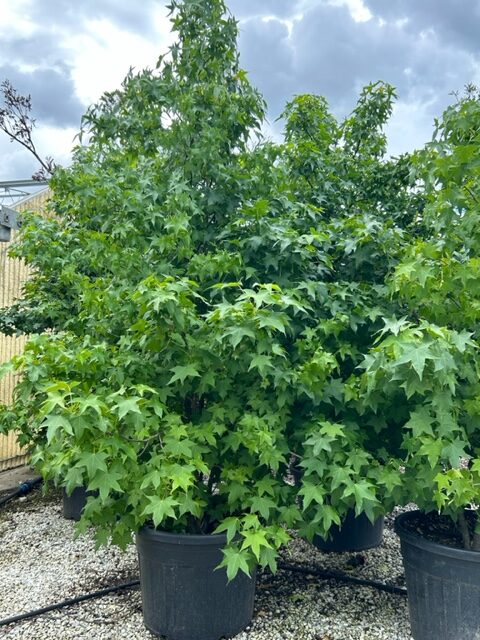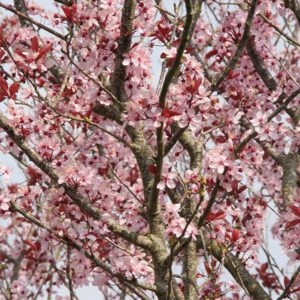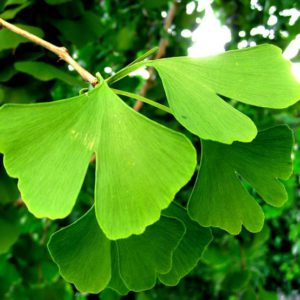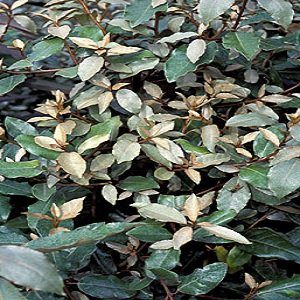Liquidambar styraciflua
Price range: €80.00 through €380.00
Frequently Bought Together
 Compost - 50L (Pot Size: 50l) Compost - 50L (Pot Size: 50l) |
€10.50 |
 Liquid Root Booster - 500ml (Size: 500ml) Liquid Root Booster - 500ml (Size: 500ml) |
€12.50 |
 Posts & Straps - Double Post & Crossbar (Size: double-post-crossbar) Posts & Straps - Double Post & Crossbar (Size: double-post-crossbar) |
€12.50 |
| Total for selected item(s) | €35.50 |
Description
Common Name: Sweet Gum, American Sweet Gum
Botanical Name: Liquidambar styraciflua
Family: Altingiaceae
Origin: Eastern North America
Mature Height: 20-25 metres
Mature Spread: 10-15 metres
Growth Rate: Moderate (40-50cm per year)
Foliage: Deciduous; star-shaped leaves with 5-7 pointed lobes, glossy dark green through summer, transforming to spectacular shades of crimson, burgundy, purple, orange, and gold in autumn
Flowers: Inconspicuous greenish-yellow clusters in spring
Fruit: Spiky, spherical seed capsules (2-4cm) persist through winter; decorative but can be a consideration for paths and lawns
Soil Requirements: Prefers moist, fertile, slightly acidic to neutral soil; tolerates clay and loam; dislikes shallow chalk or very alkaline conditions; best autumn colour in acidic soil
Light Requirements: Full sun (essential for best autumn colour)
Hardiness: Fully hardy; tolerates wind and urban pollution once established
Special Features: Outstanding autumn colour (one of the finest); attractive corky bark on mature specimens; architectural form; long-lived; aromatic resin when bark is damaged
Description
The Sweet Gum is a tree that understands timing. Through spring and summer, it provides a handsome backdrop – glossy, star-shaped leaves creating a dense, pyramidal canopy that offers cooling shade and elegant structure. The foliage is attractive but understated, allowing other plants their moment in the spotlight.
Then autumn arrives, and Liquidambar takes centre stage. The transformation is nothing short of miraculous – each leaf becomes a work of art, shifting through a spectrum of colours so rich and varied that no two trees (or even two leaves) are quite the same. Deep crimson bleeds into burgundy, orange glows beside gold, and purple shadows deepen the display. The effect is mesmerising, particularly when backlit by low autumn sunshine.
The star-shaped leaves – reminiscent of maples but with finer, more delicate lobes – create a distinctive texture that’s instantly recognisable. As the tree matures, the bark develops attractive corky ridges and furrows, adding winter interest and textural contrast to the garden.
The spiky seed capsules, often called “gumballs,” hang like Christmas ornaments through winter, adding sculptural detail to the bare branches. Whilst decorative, they can be a consideration for formal lawns or paved areas – though many gardeners consider them a small price to pay for such spectacular autumn colour.
What makes Liquidambar particularly valuable is its adaptability and resilience. Once established, it tolerates urban pollution, wind, and a range of soil conditions (though it performs best in moist, slightly acidic ground). It’s a tree that rewards patience – young specimens may take a few years to develop their full colour potential, but the wait is always worthwhile.
This is a tree for those who celebrate the seasons – a living calendar that marks autumn’s arrival with unmatched drama and beauty.
Caragh Garden Notebook: Caring for Your Liquidambar styraciflua
Planting Your Sweet Gum
Choose a site in full sun – this is essential for the best autumn colour. The location should have moist, fertile, well-drained soil that’s slightly acidic to neutral. Sweet Gum tolerates clay and loam but dislikes shallow chalk or very alkaline conditions, which can cause leaf yellowing (chlorosis).
Allow ample space for the mature canopy – at least 10-12 metres from buildings, boundaries, and other large trees. Avoid planting near paths, patios, or formal lawns if the spiky seed capsules are a concern.
Dig a generous planting hole twice the width of the root ball but no deeper. Position the tree so the root flare sits just at or slightly above soil level. Backfill with excavated soil enriched with ericaceous compost if your soil is alkaline, firm gently, and water thoroughly. Stake young trees for the first 2-3 years using a single angled stake and flexible tree tie.
Apply a 7-10cm layer of organic mulch (leaf mould or composted bark) around the base, extending to the drip line but keeping it clear of the trunk.
Plant bare-root or root-balled specimens from November to March, or container-grown trees year-round (though autumn planting is ideal).
Watering & Feeding
Water deeply and regularly during the first two growing seasons, particularly during dry spells. Sweet Gum prefers consistent moisture and performs best when the soil doesn’t dry out completely. Once established, it’s reasonably drought-tolerant but benefits from occasional deep watering during prolonged dry periods.
Feed young trees each spring with a balanced slow-release fertiliser or a generous top-dressing of well-rotted compost. On alkaline soils, use an ericaceous feed to help prevent chlorosis. Mature specimens require minimal feeding – simply maintain the mulch layer.
Pruning & Maintenance
The Sweet Gum requires minimal pruning and naturally develops a strong, pyramidal form. Remove any dead, damaged, or crossing branches in late winter (January-February) when the tree is fully dormant.
Avoid heavy pruning, as Liquidambar is slow to heal and doesn’t respond well to hard cuts. If formative pruning is needed to maintain a central leader, do so gradually whilst the tree is young.
The spiky seed capsules can be raked up in late winter if they’re a concern, though many gardeners leave them as they provide winter interest and wildlife habitat.
Seasonal Interest
Winter: Elegant pyramidal silhouette with attractive corky bark on mature specimens; spiky seed capsules persist, adding sculptural detail.
Spring: Fresh green star-shaped leaves unfurl; inconspicuous flowers appear.
Summer: Dense canopy of glossy, dark green foliage provides cooling shade; neat, architectural form.
Autumn: Spectacular transformation to crimson, burgundy, purple, orange, and gold – one of the finest autumn displays of any tree; colour lasts 3-4 weeks.
Companion Planting
The Sweet Gum’s autumn drama is best complemented by plants that either provide contrast or extend the seasonal interest. Underplant with shade-tolerant evergreens such as Sarcococca, Mahonia, or ferns to provide year-round structure.
For autumn harmony, combine with other autumn-colouring plants such as Acer palmatum, Cercidiphyllum japonicum, or Fothergilla major. Ornamental grasses – Miscanthus, Calamagrostis, or Molinia – add movement and echo the warm autumn tones.
Spring bulbs – Narcissus, Crocus, or Erythronium – can be naturalised beneath the canopy to provide early colour before the tree leafs out fully.
Pests & Diseases
Generally healthy and trouble-free. Occasionally affected by leaf spot or coral spot fungus on dead wood (remove promptly). On alkaline soils, may develop chlorosis (yellowing leaves) – treat with chelated iron or ericaceous feed.
Young trees may be susceptible to aphids in spring, though this rarely requires treatment and doesn’t affect the tree’s health.
Why Choose Liquidambar styraciflua from Caragh Nurseries?
Our Sweet Gums are carefully grown to ensure strong, well-structured specimens with healthy root systems. Whether you’re creating a focal point for autumn drama, establishing a shade tree with year-round presence, or planting a tree that will be admired for generations, Liquidambar styraciflua offers unmatched seasonal beauty and enduring elegance. This is a tree that rewards patience and celebrates the seasons – a true garden treasure.






